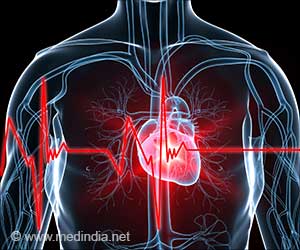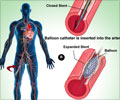Researchers analyzed the link between muscle strength and the risk of developing heart failure in patients who had a heart attack without prior history of complications.

Heart failure after myocardial infarction: incidence and predictors
Go to source). Previous research has shown that having strong quadriceps is associated with a lower risk of death in patients with coronary artery disease.
Testing The Role of Muscle Power in Heart Attack Patients Survival
This research tested the hypothesis that leg strength is associated with a lower risk of developing heart failure after acute myocardial infarction. Researchers included 932 patients hospitalized from 2007 to 2020 with acute myocardial infarction.‘Heart attack patients having high quadriceps muscle strength level was associated with a 41% lower risk of developing heart failure.’





These patients did not have heart failure before the admission and did not develop heart failure complications during their hospital stay. The median age was 66 years and 753 participants (81%) were men.Maximal quadriceps strength was measured as an indicator of leg strength. Patients sat on a chair and contracted the quadriceps muscles as hard as possible for five seconds. A handheld dynamometer attached to the ankle recorded the maximum value in kg.
The measurement was performed on each leg and the researchers used the average of both values. Strength was expressed relative to body weight, meaning that quadriceps strength in kg was divided by body weight in kg and multiplied by 100 for a % body weight value.
Patients were classified as ‘high’ or ‘low’ strength according to whether their value was above or below the median for their sex. The median value for women was 33% body weight and the median value for men was 52% body weight.
A total of 451 patients had low quadriceps strength and 481 had high strength. During an average follow-up of 4.5 years, 67 patients (7.2%) developed heart failure. The incidence of heart failure was 10.2 per 1,000 person-years in patients with high quadriceps strength and 22.9 per 1,000 person-years in those with low strength.
Advertisement
They also analyzed the association between quadriceps strength as a continuous variable and the risk of developing heart failure. Each 5% body weight increment in quadriceps strength was associated with an 11% lower likelihood of heart failure (2✔ ✔Trusted Source
Muscular Strength and Cardiovascular Disease: AN UPDATED STATE-OF-THE-ART NARRATIVE REVIEW
Go to source).
Advertisement
The findings need to be replicated in other studies, but they do suggest that strength training involving the quadriceps muscles should be recommended for patients who have experienced a heart attack to prevent heart failure.
References:
- Heart failure after myocardial infarction: incidence and predictors - (https://onlinelibrary.wiley.com/doi/10.1002/ehf2.13144 )
- Muscular Strength and Cardiovascular Disease: AN UPDATED STATE-OF-THE-ART NARRATIVE REVIEW - (https://pubmed.ncbi.nlm.nih.gov/32796492/ )
Source-Eurekalert















